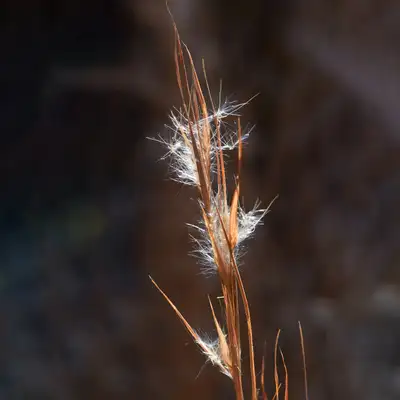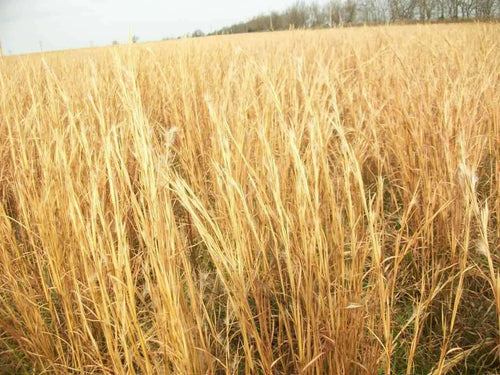Broom sedge, scientifically known as Andropogon virginicus, is a perennial grass native to North America, particularly prevalent in the southeastern United States. Also referred to as broomsedge bluestem or yellow sedge bluestem, this plant holds significant ecological and cultural importance in its native habitat. Despite its humble appearance, broom sedge plays crucial roles in various ecosystems, ranging from providing habitat and food for wildlife to influencing soil health and erosion control. This essay will delve into broom sedge's characteristics, ecological significance, cultural connections, and potential uses.
/filters:strip_exif()/assets/plants/plant_28114/users/plant_28114_user_1656_20210331003740.jpg)
Characteristics Of Broom Sedge
Broom sedge is a warm-season perennial grass that grows in clumps and belongs to the family of sedges. It is a positively versatile plant that can flourish in diverse soil classes and environmental conditions. Its clump-forming growth habit is often dense and can outcompete other plant species, particularly in degraded areas.
The plant's inflorescences are reddish-brown to copper-colored and arranged in a distinctive bristly pattern that looks like a broom, which gives the plant its common name. Broom sedge is commonly found in areas prone to disturbance, including old fields, roadsides, and abandoned agricultural lands. The plant has rough, narrow leaves that can grow up to 12 inches long, and its branches can reach up to 3 feet in altitude. These stems are typically erect and unbranched.
Broom sedges flowers during late summer and early fall, producing small, inconspicuous flowers arranged in spikelets. The flowers eventually turn into wind-dispersed seeds that can span long distances and establish new populations in other areas. This ability to disperse seeds efficiently and its tolerance to various environmental conditions has enabled broom sedge to become a dominant species in many disturbed ecosystems.
Besides being a dominant species, broom sedge has several ecological benefits. It delivers habitat and nutrition for different wildlife species, including birds and small mammals. It also plays a vital part in stabilizing soil and preventing erosion, particularly in degraded areas. The plant's deep root system helps hold the soil together, reducing the risk of soil loss and erosion risk during heavy rains or windstorms. Additionally, broom sedge is an essential source of forage for livestock in many regions, making it an economically important plant species.
Ecological Significance Of Broom Sedge
Despite being considered a nuisance by some land managers due to its tendency to colonize disturbed sites, broom sedge plays several crucial ecological roles. Its dense growth provides habitat and cover for various wildlife species, including small mammals, birds, and insects. Birds such as sparrows and quails often use broom sedge stands for nesting and foraging. Additionally, the seeds of broom sedge are an essential food source for many bird species, contributing to the overall biodiversity of the ecosystem.
Moreover, broom sedge plays a role in soil stabilization and erosion control. Its deep, fibrous root system helps bind soil particles together, reducing erosion caused by water and wind. In areas where soil disturbance has occurred, such as construction sites or agricultural fields, broom sedges can aid in restoring soil health and preventing further degradation.
Furthermore, broom sedge contributes to nutrient cycling and ecosystem succession. As a pioneer species, it often colonizes disturbed sites and prepares the ground for the establishment of other plant species. Over time, as the ecosystem matures, broom sedge may be succeeded by taller grasses, shrubs, or trees, increasing habitat complexity and biodiversity.
Cultural Connections Of Broom Sedge
Broom sedge, scientifically known as Andropogon virginicus, is a plant native to the southeastern United States. It is a warm-season grass that grows in clumps and can reach up to 4 feet in height. Broom sedge has been crucial to the region's cultural heritage, particularly in rural communities. For centuries, people have used broom sedges to craft various items, such as thatching roofs, making brooms, and weaving baskets. The plant's stiff, wiry stems are ideal for creating durable and functional items.
In addition to its practical uses, broom sedge has also been significant in folk medicine and herbalism. Indigenous peoples and early settlers in the southeastern United States used different plant parts for medicinal purposes. They believed that broom sedge had healing properties that could help alleviate various ailments. For instance, the root of the broom sedge was boiled to create a tea that was taken to relieve fever and other illnesses. The plant's stems also made poultices for treating wounds and skin infections.
Despite the advent of modern medicine, the cultural legacy of broom sedge as a medicinal plant is still prevalent in some communities in the southeastern United States. Some believe that broom sedge can still be used to treat various ailments, while others appreciate it for its cultural value. Broom sedge remains an essential part of the region's cultural heritage, and efforts are being made to preserve it for future generations.

Potential Uses Of Broom Sedge
Beyond its ecological and cultural significance, broom sedge has potential practical applications in modern agriculture and land management. While it is often considered a weed in agricultural fields, its ability to thrive in poor soils and harsh conditions could be harnessed for soil improvement and erosion control. In agroforestry systems, broom sedge could be integrated into hedgerows or buffer strips to prevent soil erosion and provide habitat for beneficial insects.
Ongoing scientific investigations into the chemical makeup of broom sedges hold the promise of revealing previously unknown industrial and medicinal applications. The plant contains certain compounds that could be utilized to develop new pharmaceuticals, biofuels, or bioremediation processes. By exploring these research areas, we could unlock new economic opportunities while simultaneously promoting the conservation and sustainable management of broom sedge populations. The potential benefits of these discoveries could be far-reaching, leading to advancements in medicine, energy production, and environmental restoration.
In conclusion, broom sedge is more than a standard grass found along roadsides and abandoned fields. Its ecological significance, cultural connections, and potential uses highlight the importance of understanding and conserving this humble yet remarkable plant. As we navigate challenges such as habitat loss, soil degradation, and biodiversity decline, recognizing the value of species like broom sedges can help inform conservation efforts and promote a more sustainable relationship with the natural world.



















































